
In the first stage of research I went through the materials I was provided about the problem. I attempted to fully understand what was required and where to being. While thinking about this, I jotted down all thoughts and potential interventions which came to mind. I made a conscious effort to not solutionize while thinking. In this phase of the design process I’ve found it helpful to write down my thoughts (especially the ones that tend towards potential solutions), put it away, and then look at them again in the ideation phase after reviewing research insights. I gathered all the questions I had from this activity, and started making a research plan which would best highlight the gaps in my understanding at this stage. It was hard to chalk out a research plan in a tight timeline.
In order to design an intervention I needed more information and understand the existing system thoroughly. I first set up interviews with facility personnel across campus as these would be potential stakeholders. These were conducted as semi structured interviews beginning with the following script:

Key Insights
4 Users Interviewed,1 Facility Manager, 2 Facility Staff, 1 Lab Manager
Following the interviews with facility personnel, I wanted to gain insight into user wants and needs. This was done through semi-structured interviews conducted with users - students of Georgia Tech. The insights from the earlier interviews helped shape some of the points of discussion. These were the questions which I hoped to gain an understanding of from the interview:

Key Insights
6 Users Interviewed,4 Grad Students, 2 Sophomore Year Students
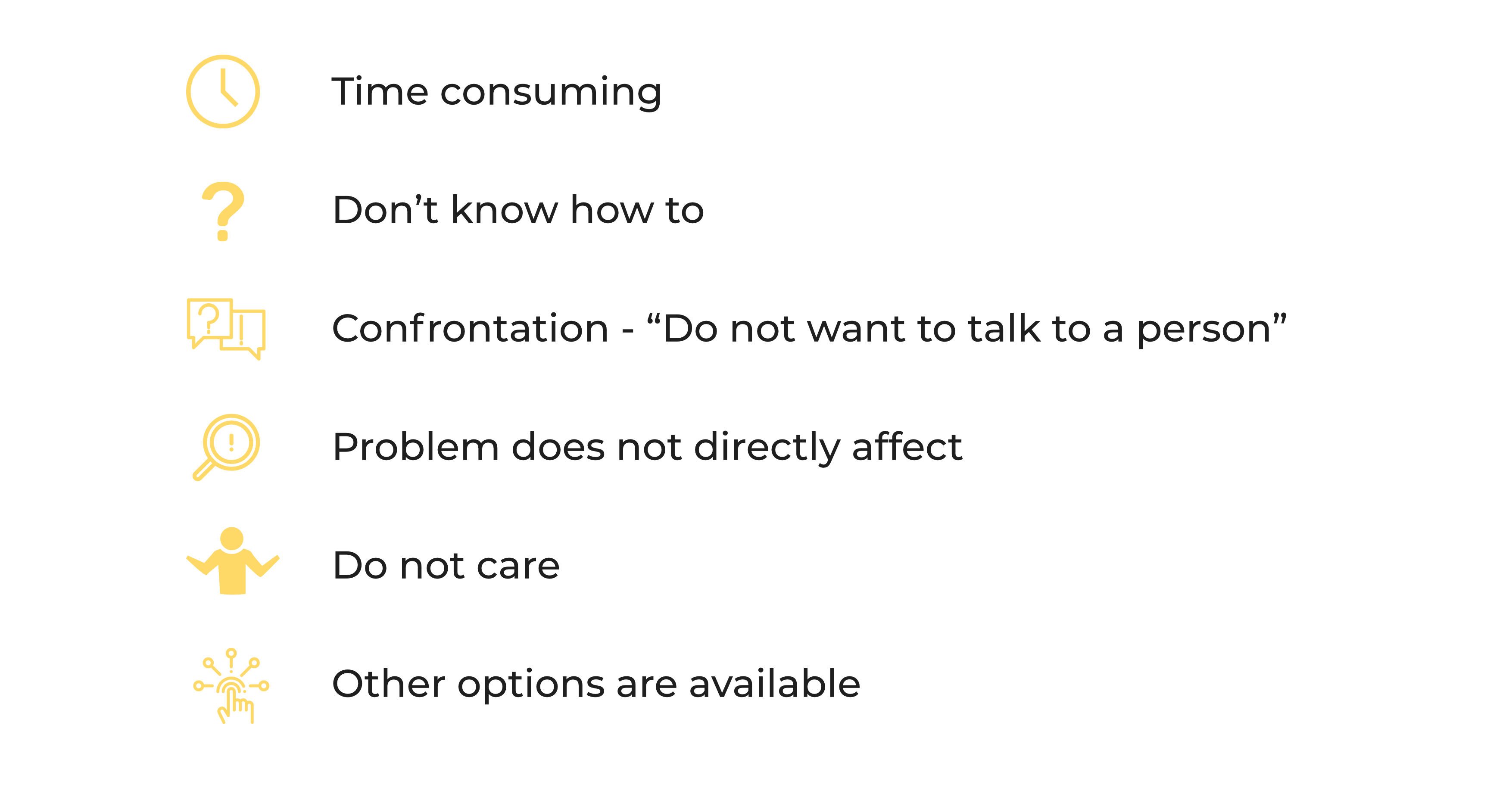
In order to get a “big picture” understanding of the entire system, I created a journey map, combining the inputs from students and facilities personnel.
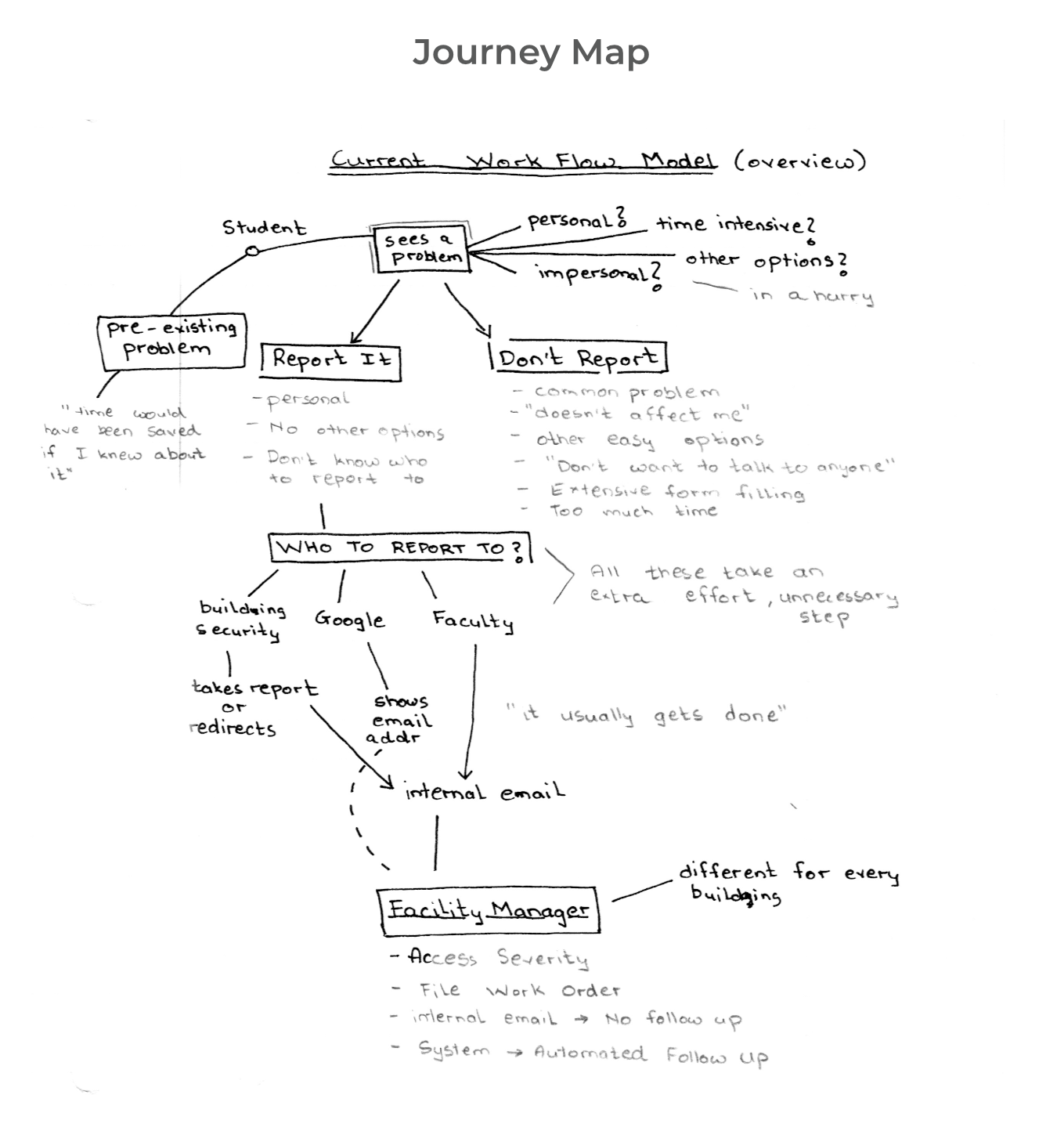
I also documented all the pain points that users faced with the current system.
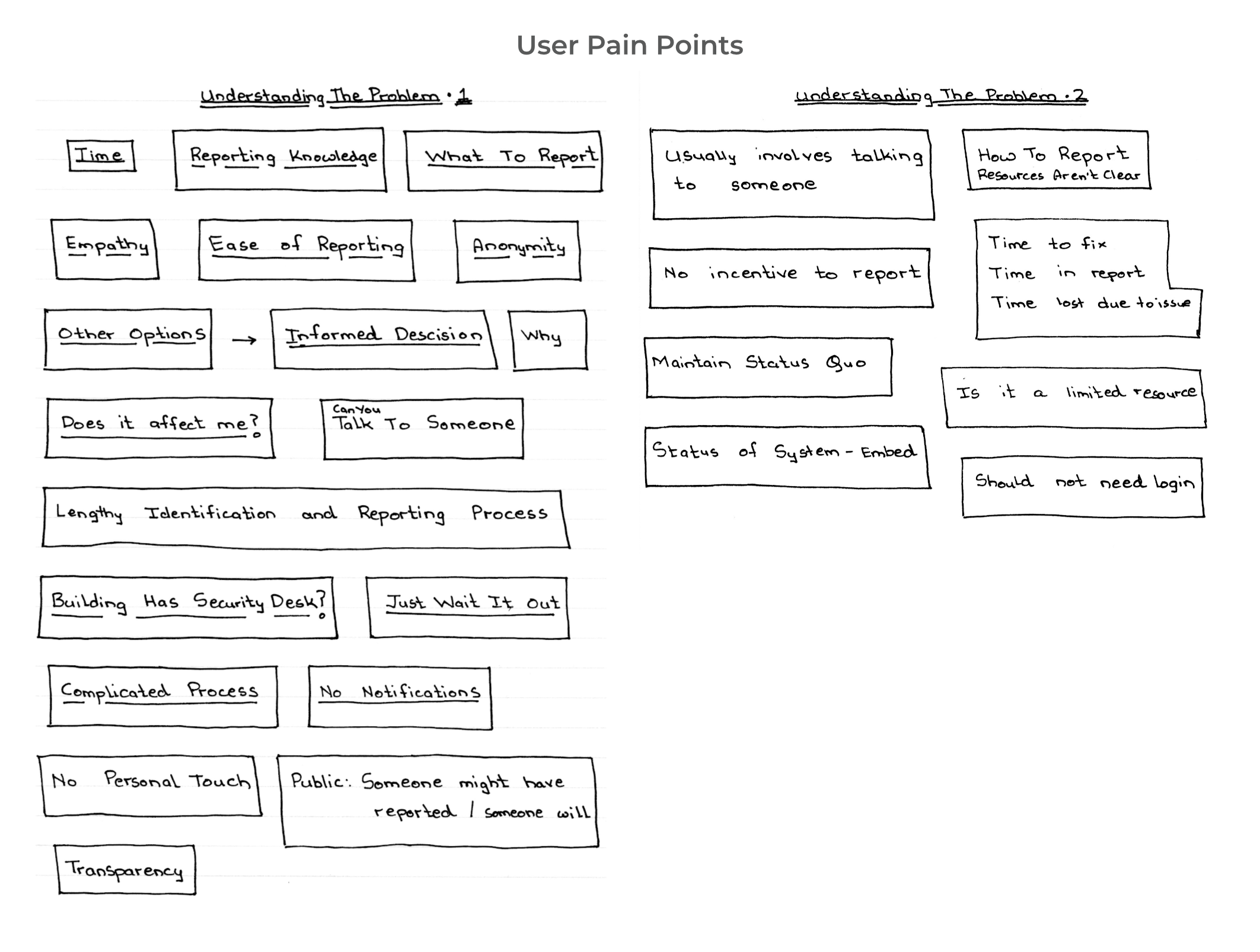
Which problem affects the experience the most, where would a design intervention be most useful?
Knowledge - Ease - Understanding - Care - Ability
In the initial brainstorming I focussed on how to allow students to report quickly and seamlessly. I also viewed the ideas I had put aside in the initial research section and started working on sketching out multiple solutions which minimized required interactions for reporting maintenance requests and provided a way to convey the status of facilities publicly. At this stage I was thinking about a minimal app and something like a whiteboard that everyone could use.

I’ve found crazy 8 exercises to be incredibly helpful in the past so after the initial brainstorming it was the next design exercise I did. Two directions of focus emerged from initial brainstorming - a collaborative board and an app with minimal interactions. Doing the crazy 8’s activity helped diverge further.
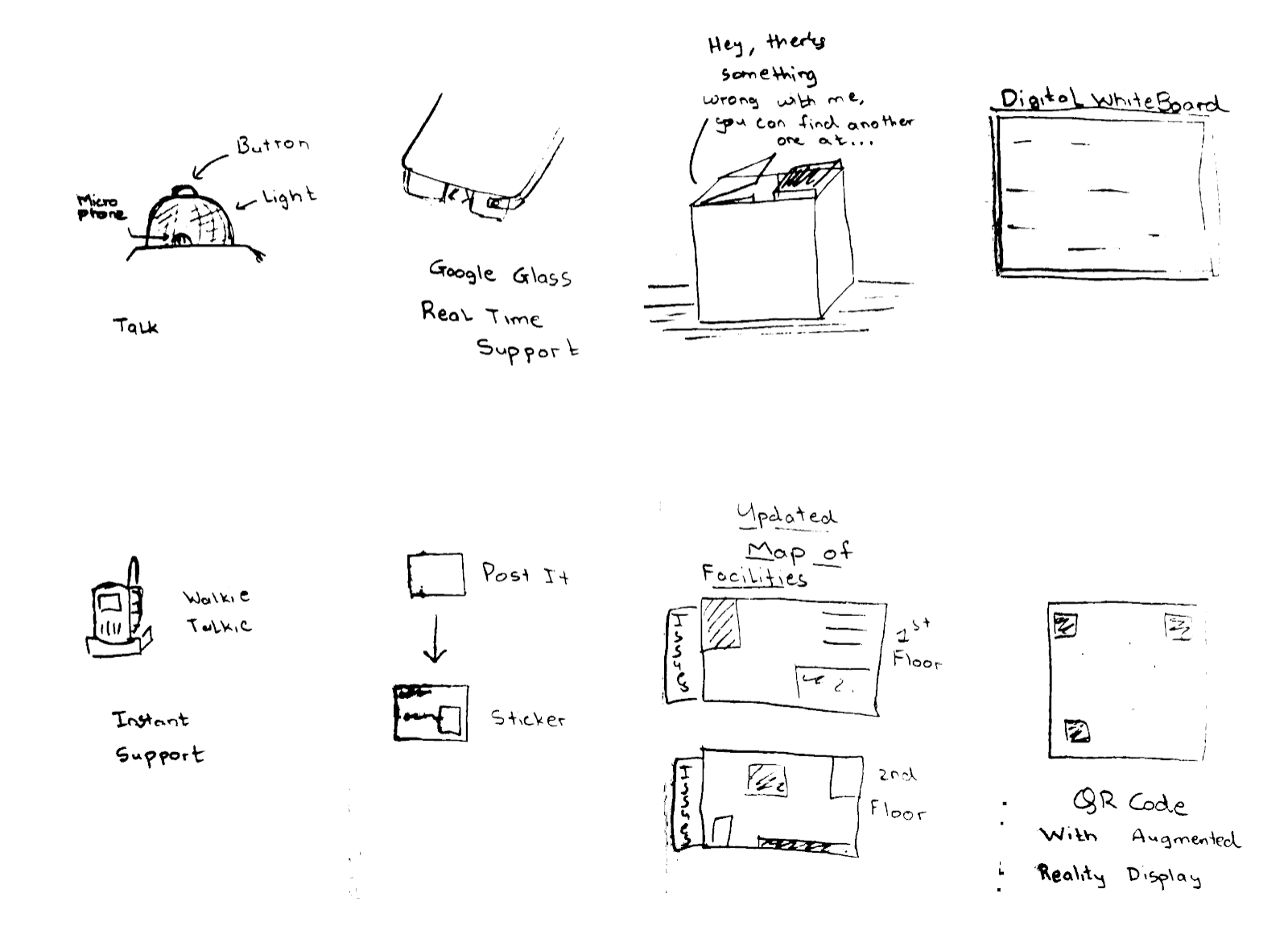
After the Crazy 8’s there was a convergence shown towards a generalized app for the whole campus and a physical whiteboard like solution. But I wanted to explore the possibilities further. As a final stage of ideation I did something called untethered brainstorming. This is an interesting ideation exercise, I’ve realized that there are implicit biases that affect me in the ideation phase. Especially when I was shifting from being an engineer to being a designer, many times I would think about developing the solution in terms of its technology stack and possibilities. While there is a chance this might be helpful in later stages, it held me back when coming up with novel ideas. So I started something which I call untethered brainstorming - If we had infinite resources and any technology how would the experience be like? In this ideation method we design the ideal solution. This is done consciously without any barriers (cost, technology, etc.) holding us back.
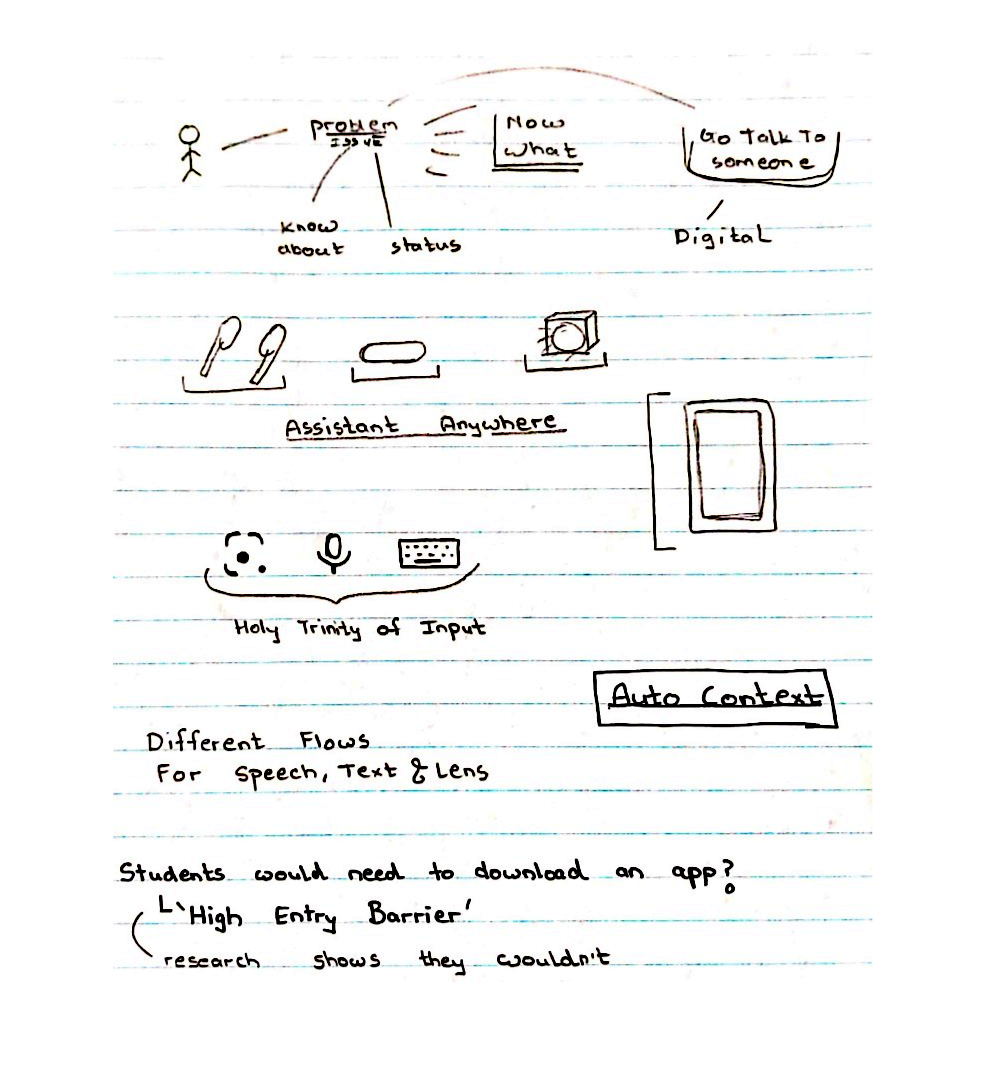
While a standalone application was my first direction of thought, the ideation process highlighted that this might not be the best approach. An app seemed like a good general solution, but students wanted any potential solution to be seamless, quick and without any added overhead for download and register.
There is an entry barrier involved with apps where they need to be installed and set up. My research indicated that students would not be willing to take this step unless the facilities issue they were facing was critical.
At this point I also explored web based apps. Georgia Tech does deploy some web based apps for students to use, these are mainly related to card access, registration etc. While web based applications solve the problem of installation, I found that they were not very approachable.
A solution started being uncovered which derived from two topics:
Virtual assistants have permeated to all spheres of everyday life. They can be used through multiple modalities and through various mediums, irrespective of the operating system, device etc.
Students need to be provided information on how to report. This should also develop a sense of community to encourage people to report.
The solution would comprise of two parts, both can be used independently or together. Each solution has its own unique advantage.
This combined solution would be accessible to anyone irrespective of technology, internet access, device or other such things. The virtual assistants I tested worked well with accessibility tools for vision impairment, hence accessibility would be built in to the solution.
This is the first phase of the solution. A physical board placed in a prominent location near all facilities. One board corresponding to every major facility unit - eg. printer, room, overall building.
The board has information on how to report repair and maintenance requests. Students can report using the board directly by sticking a note on it (like a post-it). There are notes and pens placed near every board.
On the facility side, there are personnel assigned to boards that they monitor. On an average they visit the boards assigned to them once in a day. If there are any notes present on a board, they respond by sticking a note of their own. In this manner the state of the equipment and repair is available for everyone to see and understand.
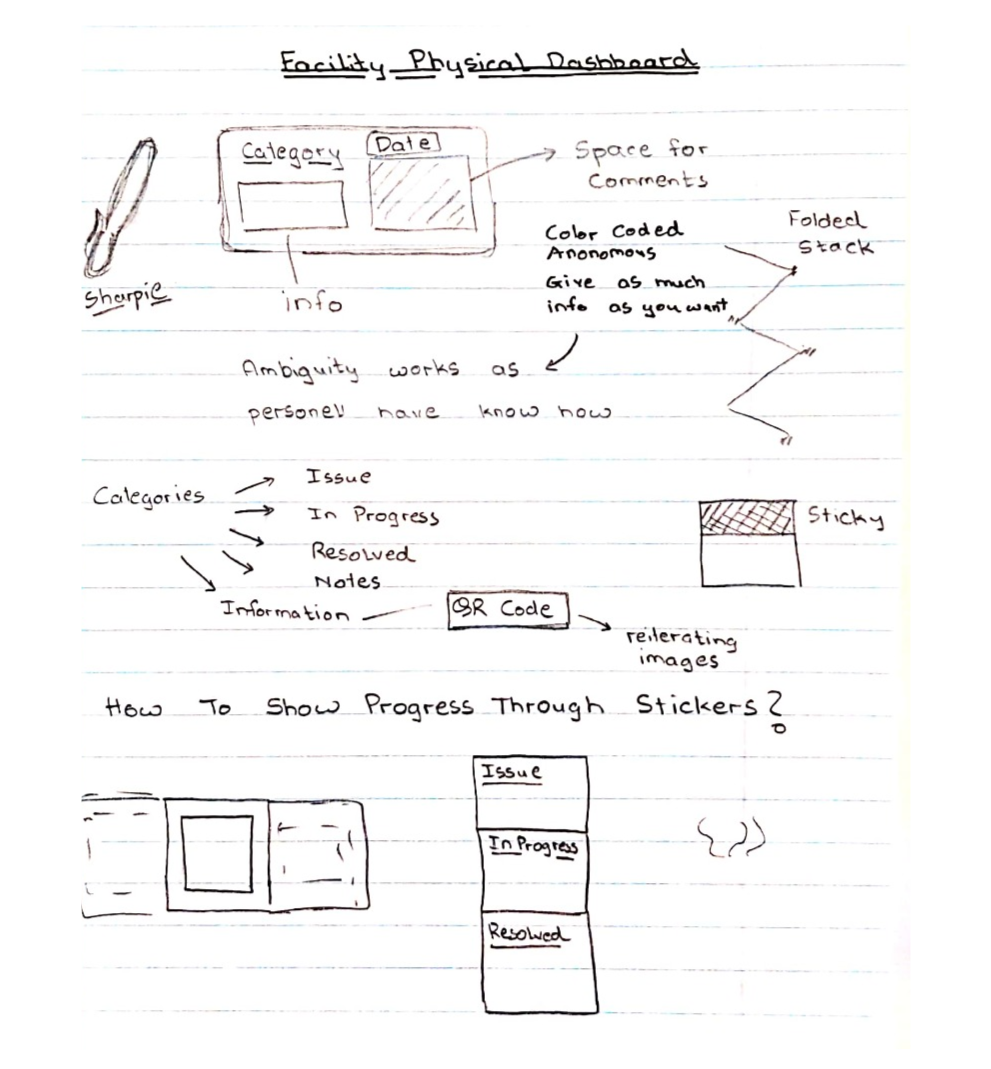
Experience Attributes
Experience Flaws
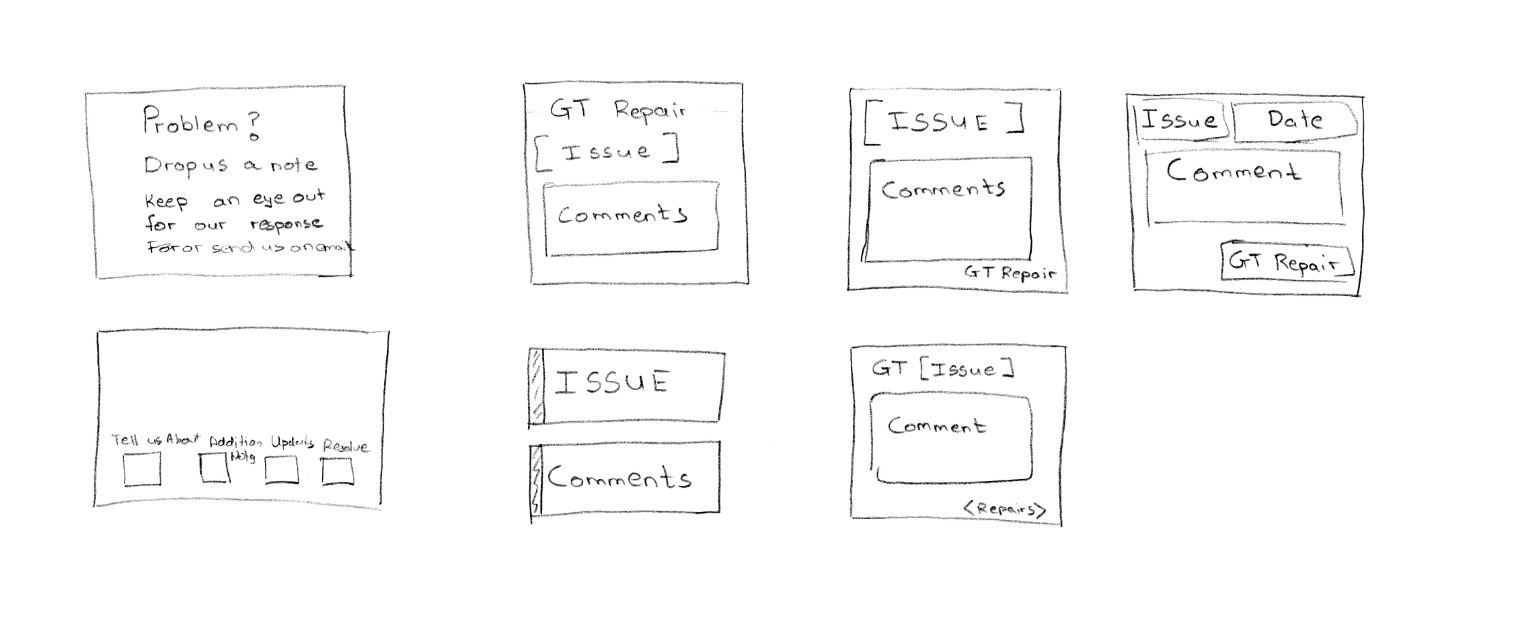
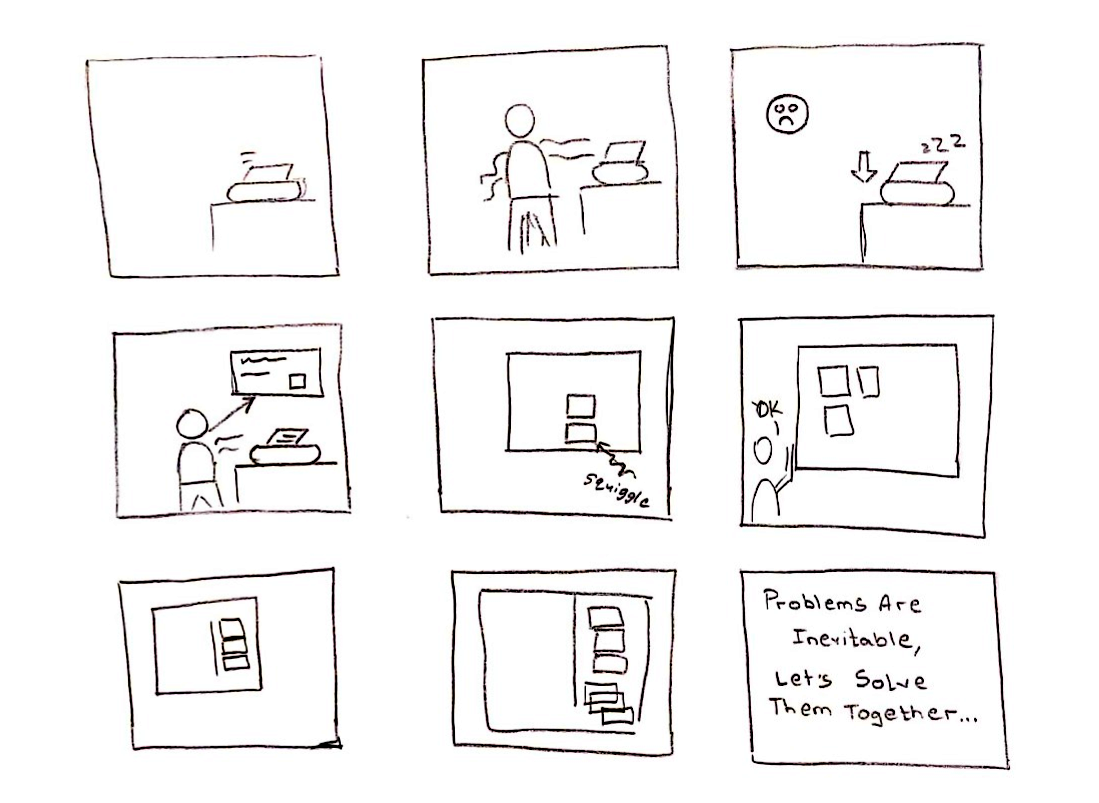
Predefined sticker-like model simplifies the process. Writing the problem is optional as the sticky notes already have basic messages on them.

The community board also has basic information on how to report facilities repair and maintenance issues along with the sticky notes.
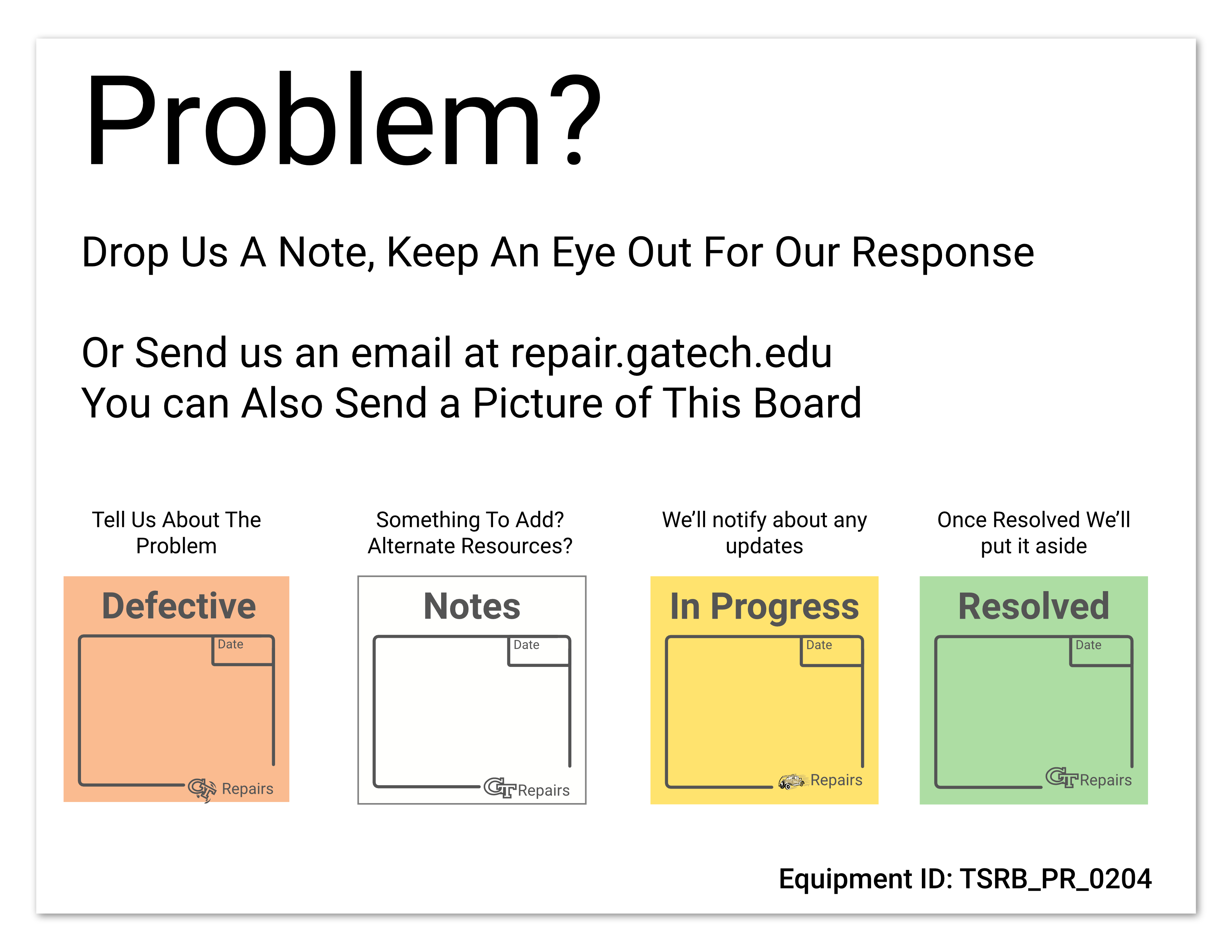
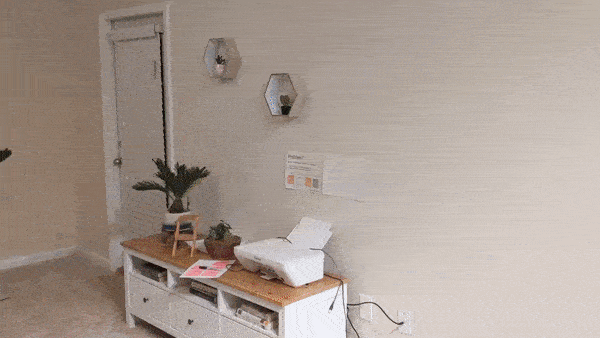
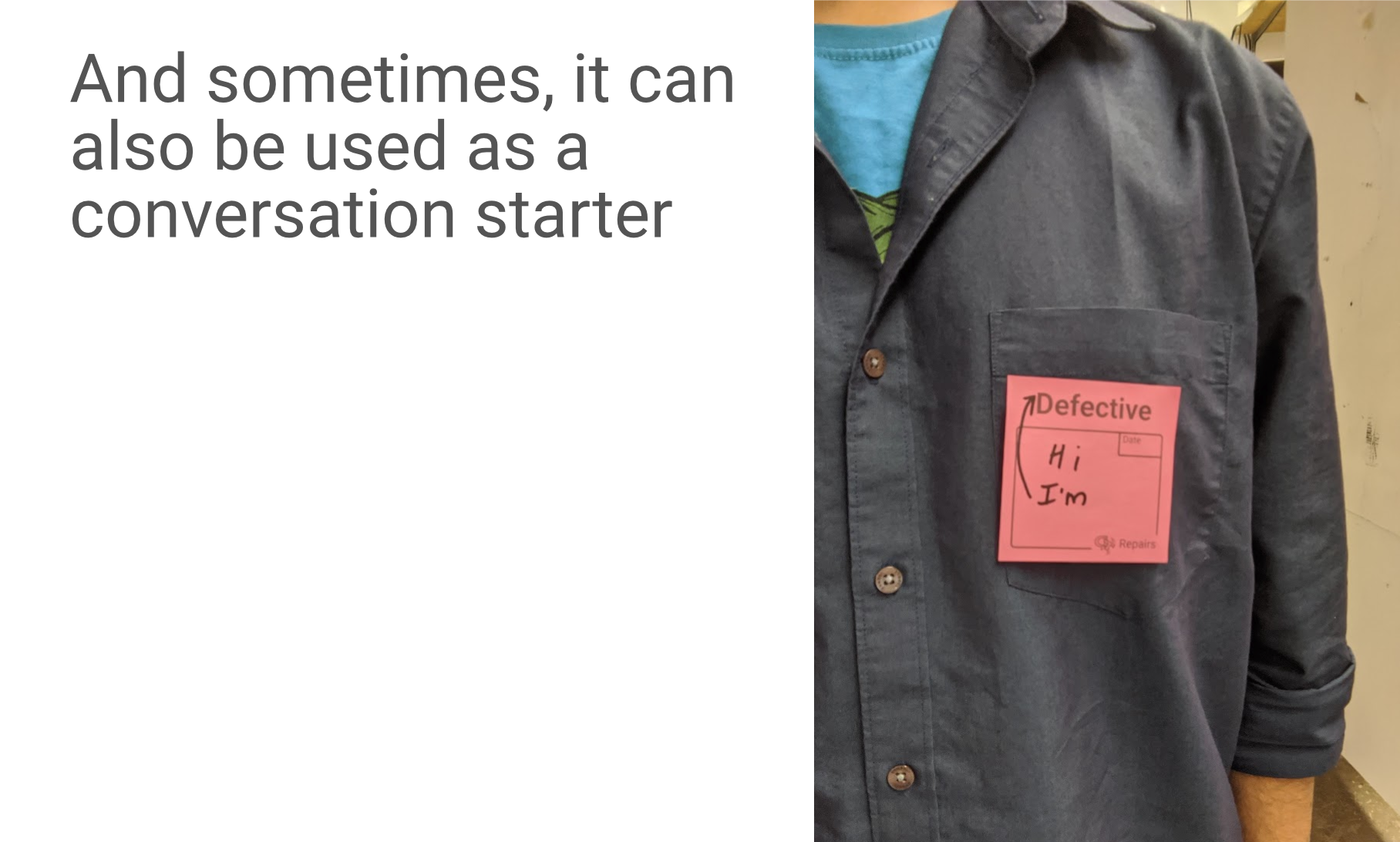
This is the second phase of the solution and leverages existing virtual assistants to provide an easy means to report facility maintenance and repair. Users access the interface as a web based service that is made available through a virtual assistant. This is done through wither an action (Google Assistant) or Skill (Amazon Alexa) or other equivalent solutions for virtual assistants.
To showcase this project I use Google Assistant, this is because currently it is the only virtual assistant that supports multi-modal (speech, text, camera) input and outputs. The designed experience is applicable to any virtual assistant with similar features.
Experience Attributes
Experience Flaws

The experience can be initiated through multiple modalities. It begins by asking Assistant to start a conversation with GT Repairs.
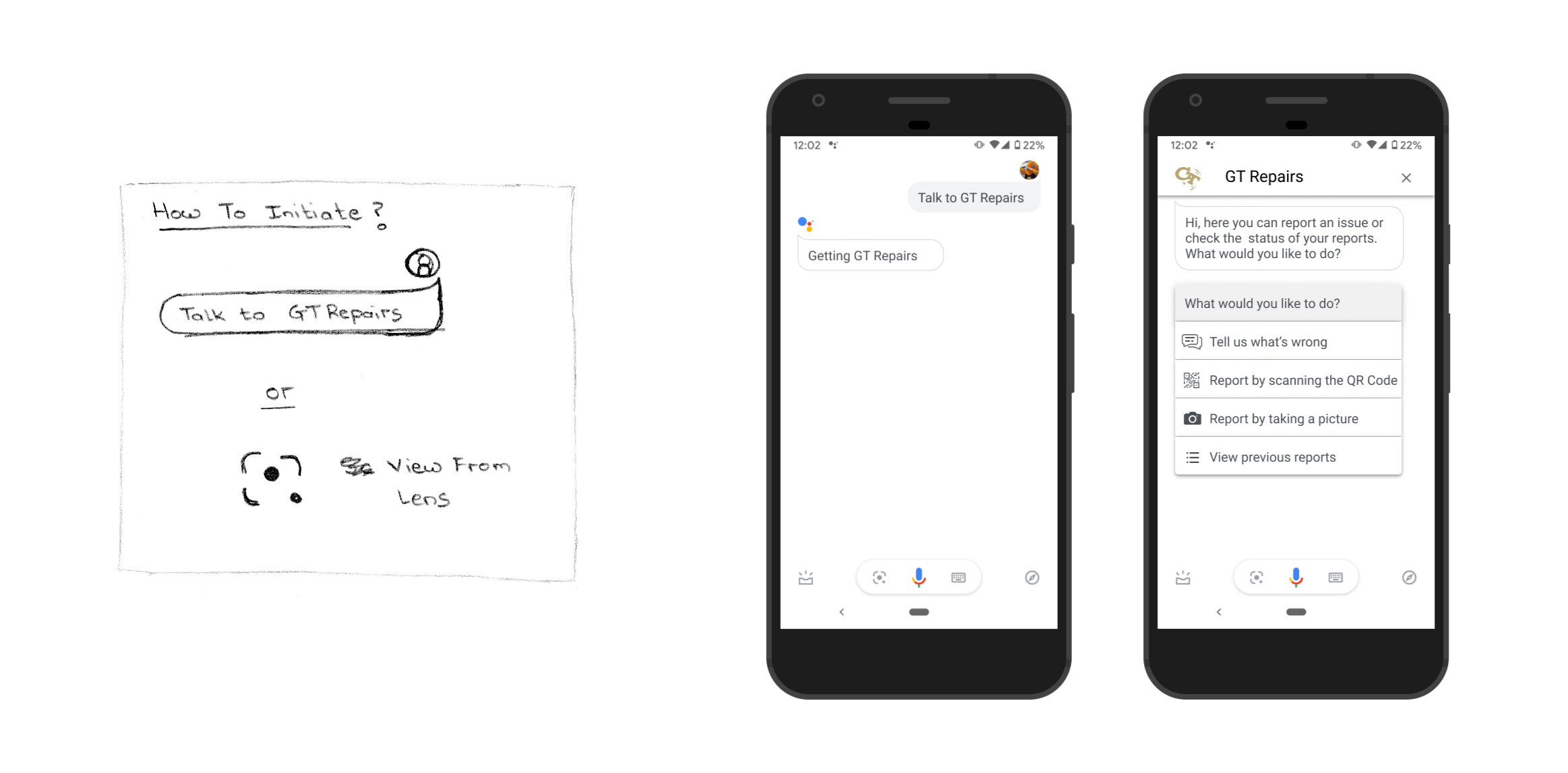
Making Use of Mixed-UI Capabilities
If triggered by speech, the experience is more conversational
If triggered by text the experience leverages more UI elements
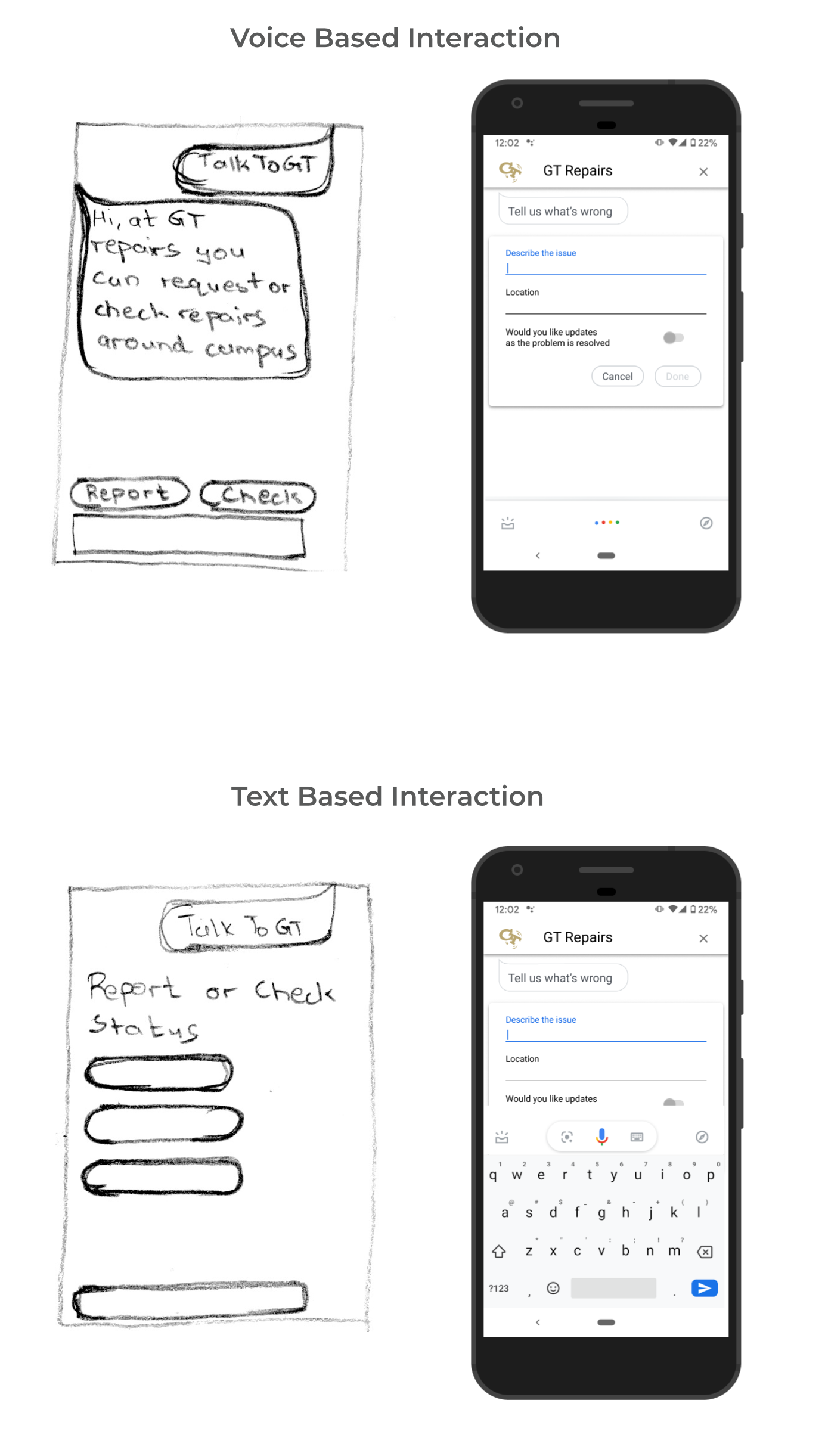
Making Use of Context
Location input field auto-filled from GPS coordinates.
User can view these and change if required.
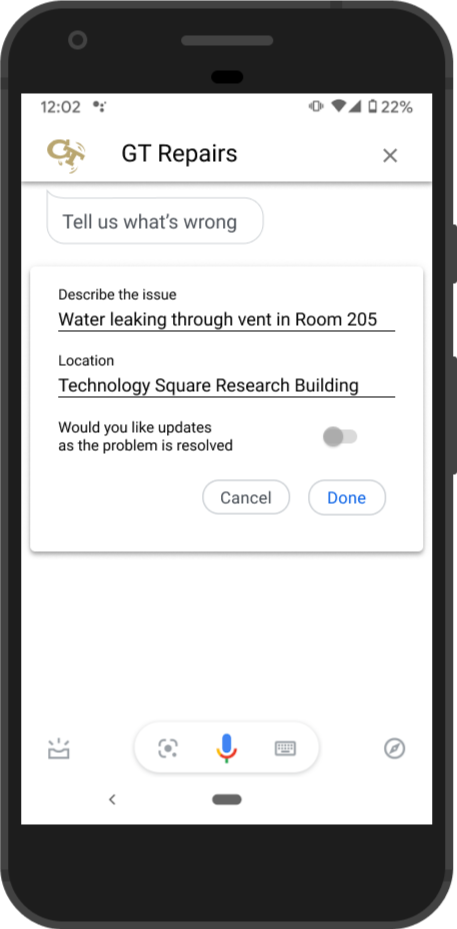
Optional Updates on Submitted Requests
Allow for optional updates on resolution of the problem. User ID number will only be asked if user signs up for updates, and their email id (linked to user id) would be shared with the facilities manager in order to receive email updates.

Directly Identifying and Pinpointing Problems Using The Phone Camera
This approach does not require a description of the problem, just a picture. Location is captured either through the QR code or GPS coordinates. This gives the facilities manager all the information needed to deal with the issue.
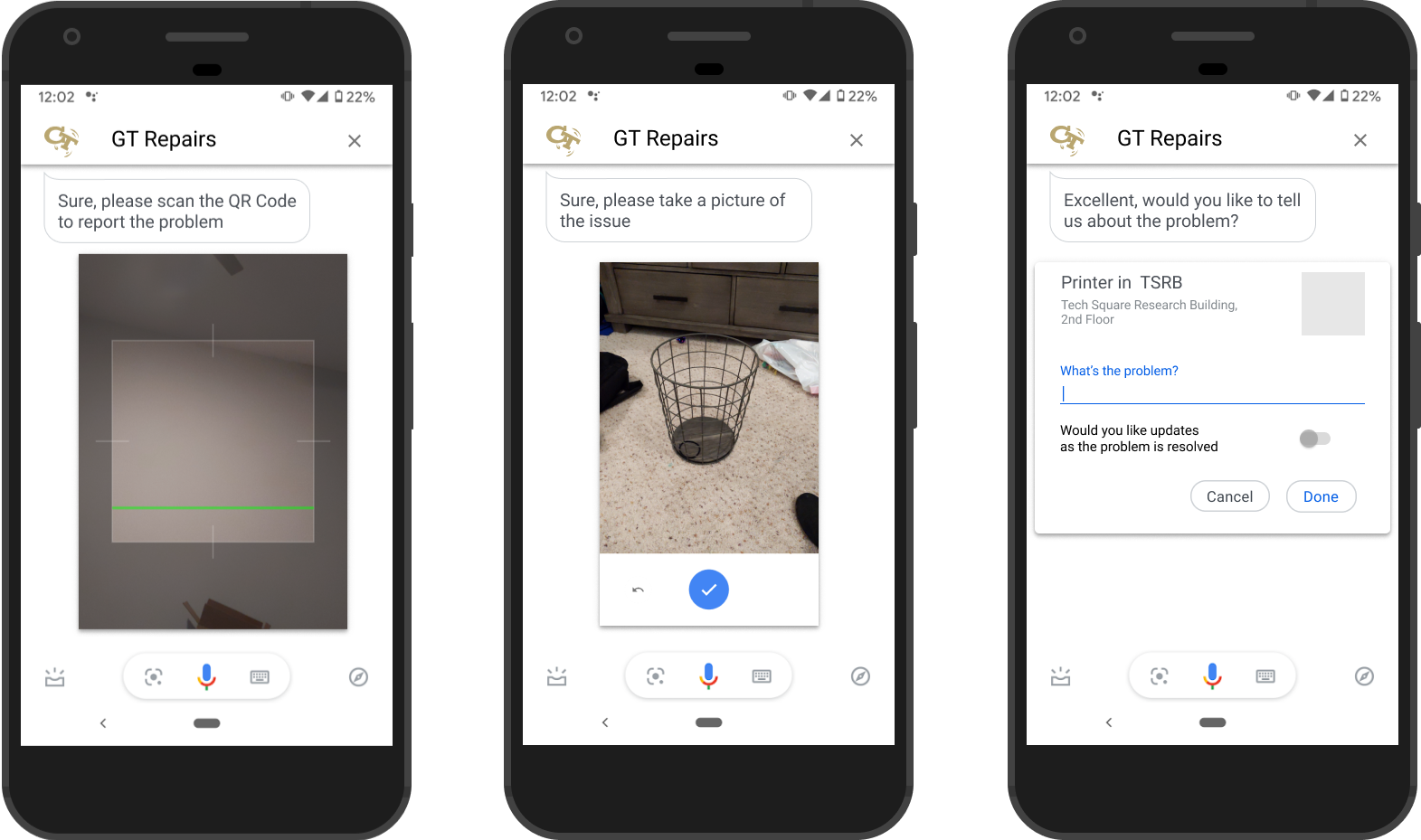
Review and access details of previous reports
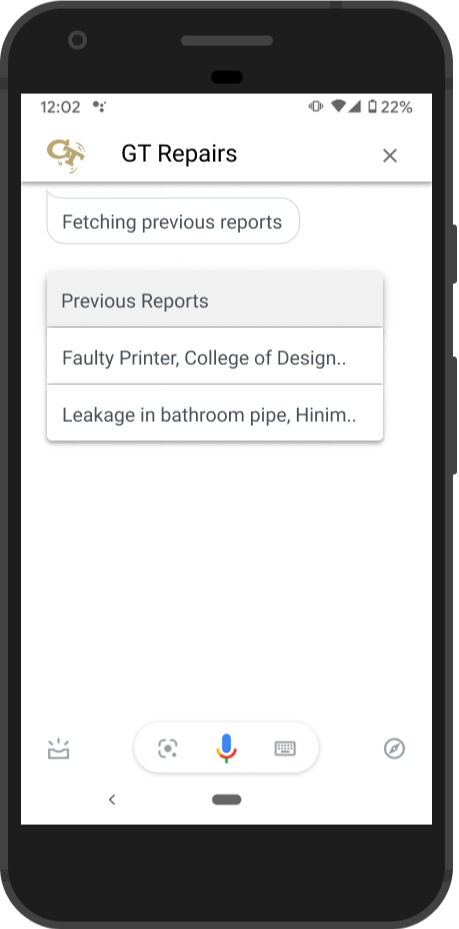
All Mockups
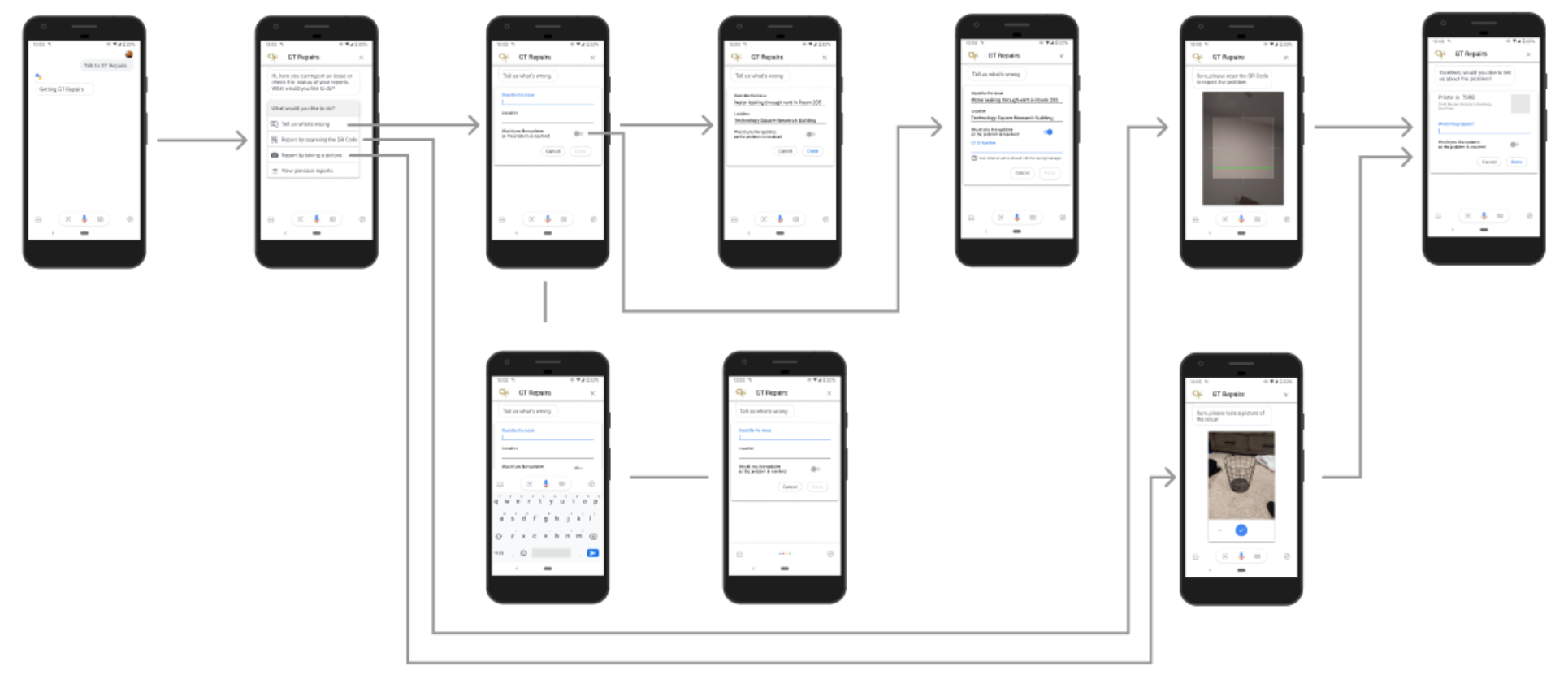
It could also...
Leverage Google Lens capability inside assistant to visualize status of facilities and interactively file a report through augmented reality.
Through a conversational method, communicate existing status of a faulty system along with alternatives.
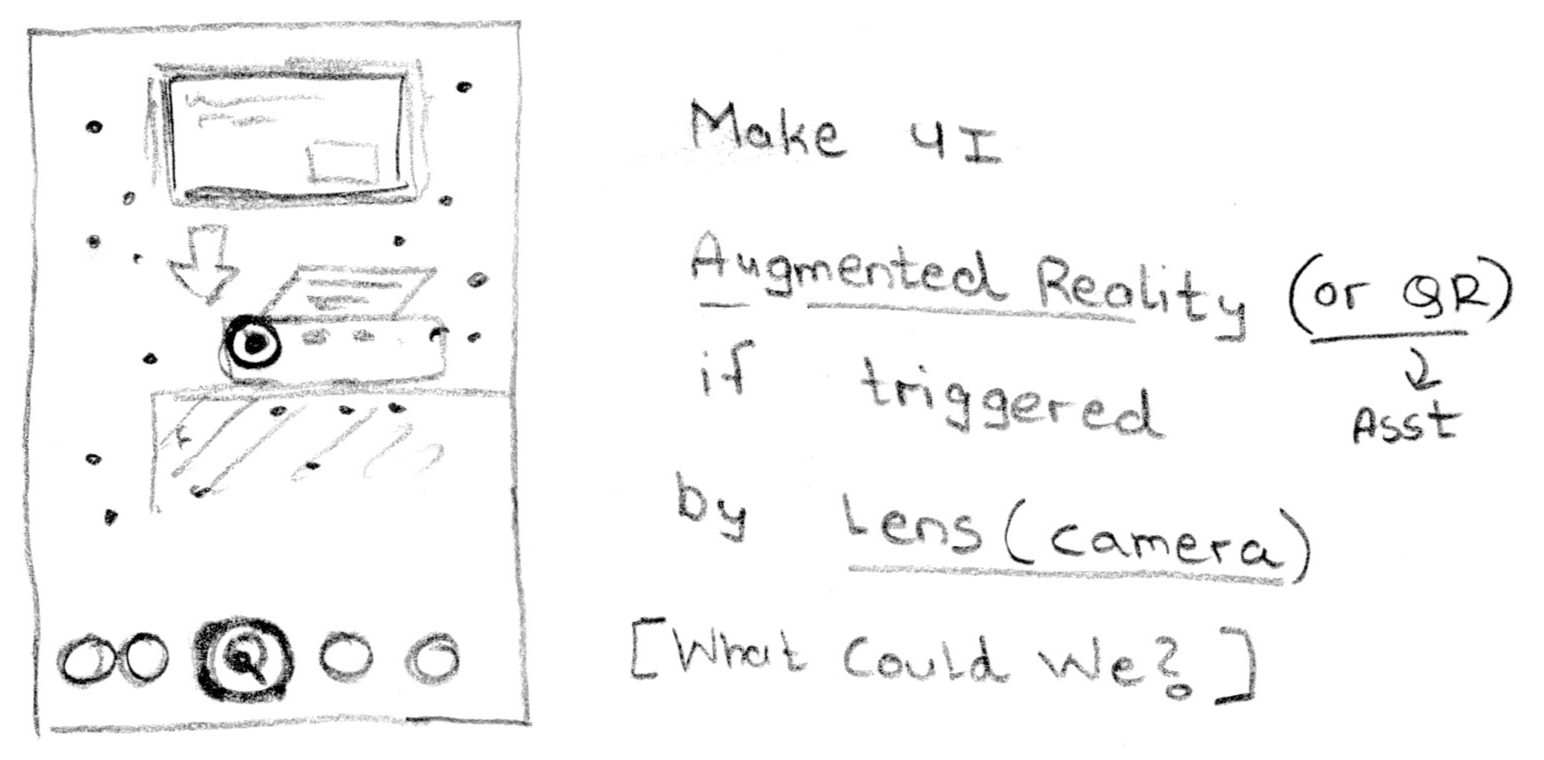
Connecting the assistant experience to facility managers
As this is a web based service extended through virtual assistants, facility managers have the option to receive emails corresponding to student reports or integrate this service into an existing computerized maintenance management system (CMMS).
If students opt in for notifications, they will be sent an automated email for action taken. The facility manager also has the option to reach out and send a direct message if required.
While under the current constraints of this design, the process ends at the high fidelity mockups, the next step would be validation. A good point to start this would be a user task analysis and talk aloud for qualitative feedback.
Based on the results, the design should be iterated over and refined. This stage would also review existing virtual assistant technologies and the best implementation technique for development and deployment so it can be incorporated into the design early on.